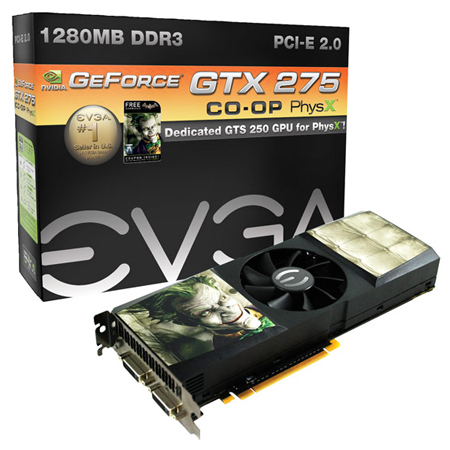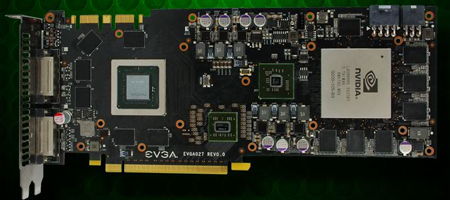With nothing to offer in terms of new architecture, it looks as though NVIDIA's partners are getting creative in offering alternatives to AMD's ATI Radeon HD 5000 series.
Take for example EVGA's all-new GeForce GTX 275 CO-OP PhysX edition, pictured below. At first glance, it looks like just another GeForce GTX 275, but there's more to it than that.

Inside the unassuming card, EVGA has shoehorned two GPUs onto a single PCB.
Pictured to the right of the board, there's a GeForce GTX 275 clocked at 633MHz, with 240 processor cores clocked at 1,296MHz. To the left, the smaller GeForce GTS 250 GPU offers a core clocked at 738MHz and 128 processor cores clocked at 1,836MHz.

The board features a total of 1,280MB of GDDR3 memory, presumably with 896MB apportioned to the GTX 275 via a 448-bit interface, leaving the GTS 250 with 384MB hooked up to a 192-bit interface.
What's the point? Well, the slower GTS 250 is described by EVGA as a dedicated PhysX processing unit, it's there to take the extra workload off the GTX 275 and raise the FPS count on PhysX-enabled titles - of which, it must be said, there aren't all that many.
It's essentially an extreme product for a niche market, and EVGA currently has it listed at a cost of $349.99. For those getting carried away, three of these CO-OP PhysX cards can be used in SLI configuration, but only one GTS 250 will be used for dedicated PhysX processing, so you're better off getting a single GTX 275 CO-OP PhysX edition to be paired with two standard GeForce GTX 275s.













